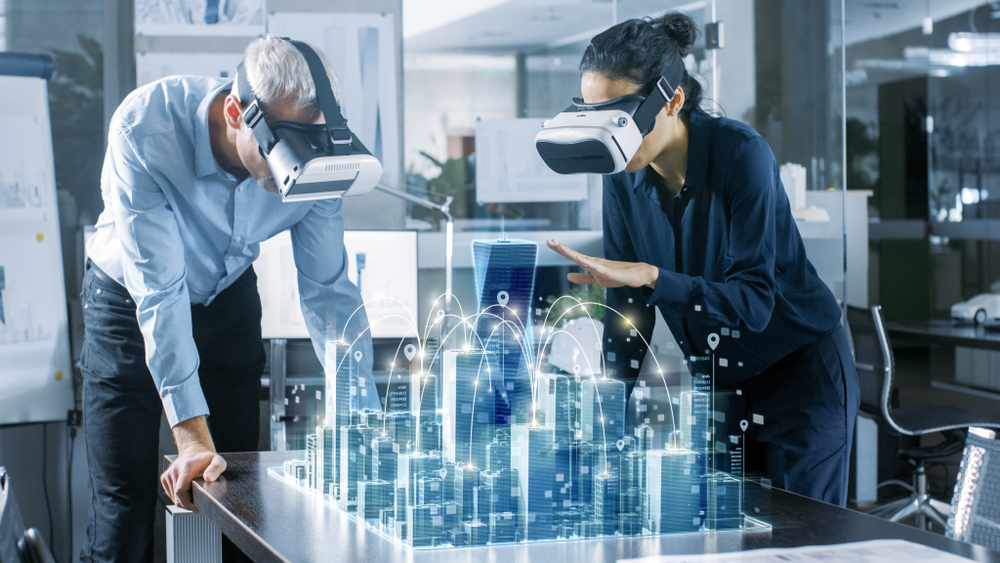Imagine purchasing new furniture for your home. With Augmented Reality (AR) and Virtual Reality (VR) you could get a representation of what that fancy new dining table or couch would look like in your living room. Maybe beige for furniture isn’t as good you thought it to be and teal is a better fit for your living room. Or imagine visiting a historic location like the Taj Mahal with your VR/AR enabled glasses and get a sense of what the place may have looked like 200 years ago. Sounds fascinating, doesn’t it?
Augmented reality and even virtual reality have many practical applications. For instance, you can get a virtual tour of your dream holiday destination and get an actual sense of what it is like to be there. Today, AR and VR are no longer mere gimmicks that are confined to only video games. They are used enhance product, critical business-functions, and help people make more informed decisions about products or services. So, let’s take a closer look at the key trends shaping the AR/VR market in 2021 and beyond.
AR/VR glasses
Technologies like 5G will pave the way for more immersive and expanded AR and VR experiences. 2021 maybe the year when smart glasses with AR become mainstream. Major companies like Facebook and Apple are set launch their own AR enabled wearables. Facebook is set to give AR a big push as evident from its project Aria prototype, whereas Apple’s smart glasses may have AR and VR capabilities. Apple has already been pushing AR as evident from the AR enabled lens on the 2020 iPad pro. With a steady push to AR by big tech giants, the mobile AR devices smart glasses market could exceed two and a half billion units by 2023. This indicates that AR is set to become more mainstream in 2021 and beyond.
VR changing the automotive industry
Virtual Reality can be a game-changer for the automotive industry with regarding to product development and product design. This is especially relevant in an era of decentralized value chains. VR systems are being deployed by manufacturers to turn CAD designs into virtual cars. Engineers can interact with these virtual cars by sitting inside and even walking around the vehicle and maybe even go for a virtual test drive. VR enabled software gives them a better handle on 3D designs as it displays fully fledged virtual 3D models. This enables engineers to inspect the smallest details and highlight design problems, flaws, or challenges at an early stage.
Apart from this augmented reality is being used in a big-way to create next generation advanced driver assist systems for a fully autonomous experience. According to marketsandmarkets, the augmented reality automotive market is projected to grow at a CAGR of 17.60% from 2020 to 2025, to reach a market size of USD 6.79 Billion by 2025.
Virtual Sports Events
In an era of social distancing, AR and VR are paving the way for virtual sports events. With the government and authorities postponing or avoiding live sports events, VR and AR have come to the rescue for the sports industry. Teams, broadcasters, sponsors, and owners can use these technologies for new sources of revenue. A good example of this is that VR/MR League pass offers enabled fans to re-live games in VR after the NBA season was cancelled in 2020 due to COVID-19. It is not going be long after theme parks, concert venues, and events use AR/VR.
The road ahead
Many industries are already using augmented reality and virtual reality. It is expected that these technologies shall be used extensively for mainstream applications like virtual shopping or tourism. These technologies open up new opportunities and the future looks bright for augmented reality and virtual reality in the new normal.



